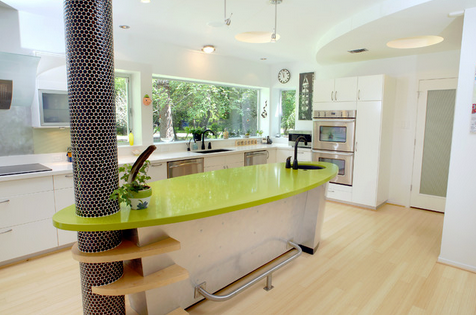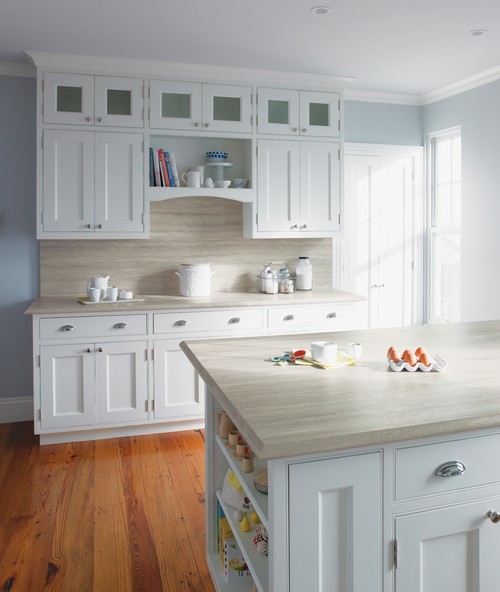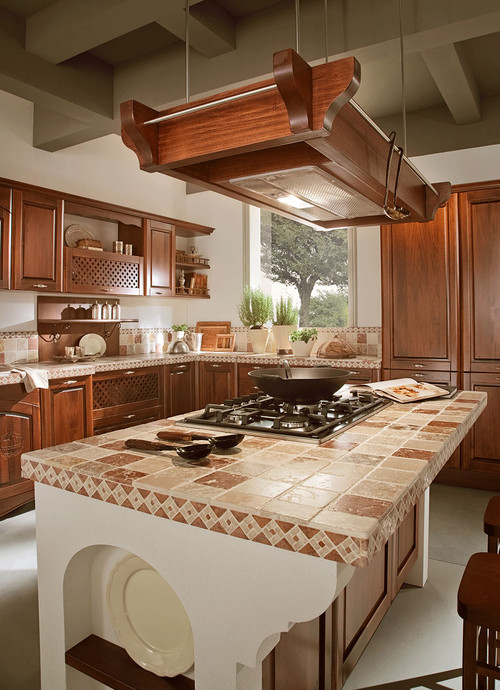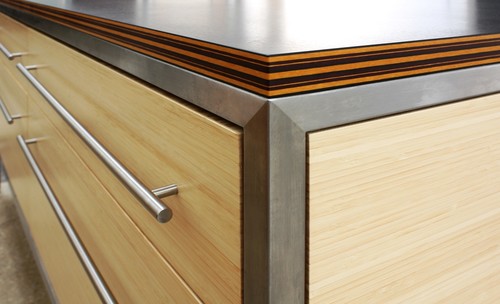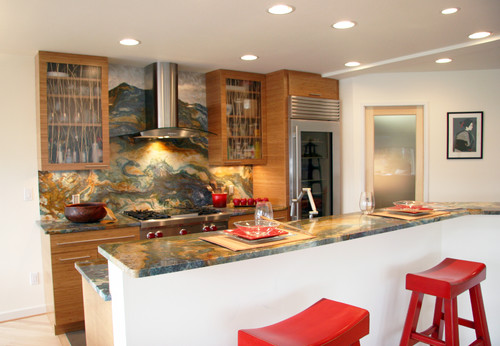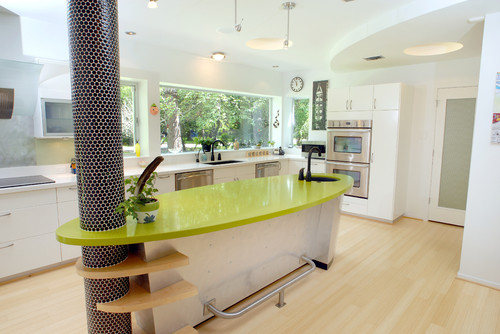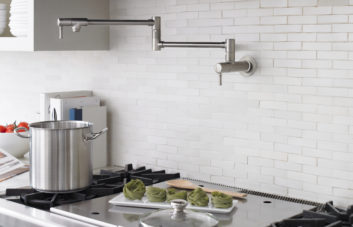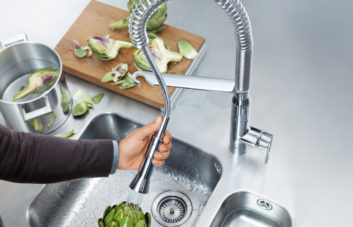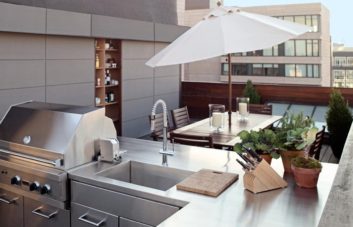Choosing a kitchen counter is a huge and often overwhelming task. Forget about the color for a minute (though that is important and can be a weeks-long, dizzying process!) – just the material is a big deal! Stone? Laminate? Eco-friendly? Something else? Counters are made of almost every imaginable material and the choices can seem endless.
Step one: pick a material.
This is a biggie. You need to examine your cooking habits, the amount of use and abuse your counters get, your square footage, and your budget.
If your budget is tight but you want beautiful counters (and who doesn’t?), never fear – you have lots of options.
Laminate counters, commonly referred to as Formica (sort of like “Kleenex” rather than “tissue”), costs between $8 and $20 per square foot and is a durable, affordable counter. It does nick, so you can’t cut directly on its surface, and it is not entirely heat-proof, so it’s best not so set hot dishes on it. Laminate is available in a massive array of colors, patterns, and finishes, so you’re sure to find (at least!) one that matches your kitchen.
Laminate is easy to clean, does not require sealing, and is available with “green” certification.
Tile is an inexpensive and beautiful choice as well. Ceramic and stone tiles will run anywhere from $10 to $50 per square foot and are available in hundreds of shapes, colors, and sizes. Tile counters are amazingly durable and easy to install, but the grout can be hard to clean.
Certain slabs of quartzite mimic the look of popular marbles (like Super White quartzite can look similar to Carrara marble) and are much more practical in a kitchen. Quartzite is comparable to granite for durability purposes; both are incredibly heat-resistant, scratch-resistant, and long-lasting with proper sealing, an easy and low-cost process. These stones – which come in thousands of colors and styles, with veining, waves, or speckles – start at $50/square foot but can get very pricey.
If you’re looking for professional-grade or indestructible counters, opt for stainless steel or concrete. Stainless counters give your kitchen an industrial look but the corresponding industrial benefits. At $80-$90 per square foot, it is not the costliest option but is not inexpensive either. When paired with stainless sinks, faucets, and/or appliances, stainless can give your kitchen a seamless (and very shiny) look. It is easy to clean and heat- and stain-resistant (but not scratch- or fingerprint-proof), so it will hold up to rigorous use.
What kind of kitchen counters do you have? What does your “dream kitchen” have?

